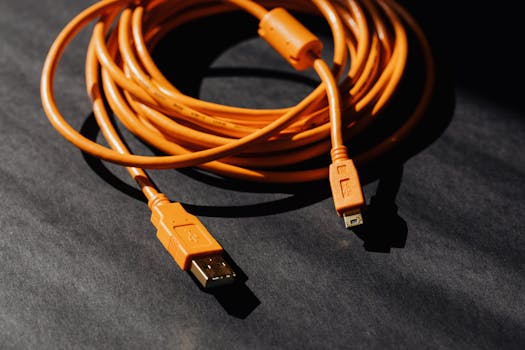Career
Remote work for beginners: routine, tools, and productivity
Discover practical advice for remote work beginner routines, essential tools, and productivity strategies. Build great habits, choose the right apps, and set up a productive workspace step by step.
Advertisement
Building a remote work beginner routine is like learning to ride a bike—wobbly at first, but steady once you find your rhythm and practical tools.
Remote work flexibility attracts people seeking autonomy, but newcomers quickly see the need for habit, reliable setup, and clear boundaries to stay focused each day.
Explore this guide for practical routines, trusted tools, and step-by-step productivity advice that any remote work beginner can follow for a smoother start.
Establishing a Reliable Work Routine Sets Your Day for Success
Your daily routine is your stabilizer—without it, a remote work beginner can lose track of time and energy. Plan work hours, breaks, and rituals from the start.
Consistency gives your brain cues when to gear up or wind down. Use cues like making coffee, setting your desk, or starting software to signal your work period.
Morning Startup Ritual: Anchoring Your Remote Day
Start each morning by establishing a trigger action—a remote work beginner might tidy their desk, check the calendar, or change into work clothes to indicate it’s time to focus.
This cue is like buckling your seatbelt before driving. It prepares your mind to switch into work mode, creating a sense of purpose from the moment you begin.
Try an audible routine. Tell yourself, “Desk’s clear, coffee’s ready, I’m logging in now.” Repeat this out loud to reinforce the habit.
Midday Reset: Prevent Afternoon Energy Dips
By lunchtime, remote work beginner fatigue can disrupt flow. Use a tech-free break and change your scenery—step outside, stretch, or refill water after eating.
This reset is a pit stop. It refuels you for the next phase, helping to avoid afternoon distractions or sluggishness. Be sure to keep breaks brief but energizing.
A timer on your phone or a recurring calendar event can remind you, “Time for a midday reset—step away and recharge.” This habit improves consistency daily.
| Routine Element | Purpose | Implementation Tips | Next Step for Beginners |
|---|---|---|---|
| Set work hours | Creates boundaries | Use calendar blocks | Pick fixed start and end |
| Establish rituals | Signals mindset shift | Pick a cue (coffee, music) | Repeat daily on logging in |
| Physical prep | Reduces midday friction | Tidy workspace each morning | Clear desk nightly, too |
| Break schedule | Boosts sustained focus | Set alarms for each pause | Take a short walk/stand |
| End-of-day shutdown | Separates work and rest | Create ‘sign off’ checklist | Write a daily summary note |
Choosing Essential Tools Improves Your Remote Setup and Workflow
Every remote work beginner needs practical tools, not just fancy apps. The essentials: reliable laptop, fast internet, cloud storage, chat, and project management.
Review what you already have, then choose replacements or additions one-by-one. A steady tech stack saves hours of troubleshooting and keeps you moving forward.
Communication Apps Drive Collaboration and Clarity
Chat and video tools cut isolation and speed up answers. For a remote work beginner, using one main messaging app (like Slack, Teams) keeps requests in one place.
Video calls should be reserved for complex topics. Before hitting send, check the message: “Is this urgent, or could it be an email instead?” Use channels wisely.
- Pin key conversations so team contact is easy.
- Mute non-urgent threads during focus work.
- Maintain professional tone, even in fast exchanges.
- Agree on daily check-in times with colleagues.
- Summarize calls in writing immediately after.
Prompt team responses build trust and save everyone time, especially for a remote work beginner seeking clarity on evolving projects.
Organizational Tools Safeguard Your Work and Deadlines
Project trackers and cloud storage are lifelines. A remote work beginner can start with simple boards like Trello, Asana, or Google Tasks to list and prioritize jobs.
- List tasks daily, with one priority “must finish” by end of day, so urgent items don’t crowd your mental space.
- Schedule files in folders by project and date, helping you find assets quickly when deadlines hit unexpectedly.
- Label documents consistently (“2024 Report Q1 – Draft”) to prevent confusion and version mix-ups with remote teams.
- Set calendar alerts for all major deadlines, review them each morning, and adjust work sessions to reflect urgent needs or new updates.
- Use browser bookmarks and shortcuts to jump to active projects, reducing time spent searching for links and specs every login.
Tighter organization means less stress and fewer forgotten steps, which a remote work beginner quickly learns is key to career growth.
Creating a Focused Home Office Boosts Motivation and Comfort Levels
A workable, distraction-free area gives a remote work beginner instant credibility. A home office doesn’t need to be fancy but must have boundaries.
Set clear space—even if it’s a small corner or table. Visual cues (lamp, mat, or divider) tell others, “This is my work zone—respect my focus.”
Visual Clarity Cues Reinforce Personal Boundaries
Placing a desktop calendar, plant, or stack of reference books at your station creates a visible work-home divide. These details signal to family, “I’m in work mode now.”
Wear headphones or place a ‘busy’ sign nearby as an unobtrusive reminder. When boundaries are respected, a remote work beginner can develop deep focus more rapidly.
At end-of-day, remove work tools from sight. This reset helps your brain relax, emphasizing that physical cues are as vital as digital ones in separating roles.
Lighting and Ergonomics Build Lasting Comfort
Use natural light when possible. Try to position your screen so glare doesn’t affect reading comfort. A supportive chair reduces back soreness, making sessions sustainable.
If your workspace doubles as another room, try using task-specific lighting. Table lamps create a mental and visual transition between work and home zones.
Check your posture each hour: feet flat, elbows at ninety degrees, and eyes level with the top of your monitor. Little posture checks protect your energy long term.
Building Connection and Trust Virtually Enhances Your Team Presence
Remote work beginner challenges often include feeling left out. Deliberately strengthening communication bridges that distance through regular check-ins, notes, and clear expectations.
Request feedback explicitly, stating, “I’m still learning—could you clarify expectations for this deadline?” Direct requests show initiative and keep you growing.
- Send end-of-day recaps to your manager, summarizing key tasks and blockers, which keeps communications open and prevents misunderstandings.
- Share calendars or status, so collaborators know your reachable hours, avoiding awkward silence or wasted waits for updates or decisions.
- Volunteer for small team tasks when possible. This demonstrates commitment and gives a remote work beginner more exposure across departments.
- Host brief virtual coffee chats to replicate informal office conversations, helping team bonds form and deepening your network beyond projects alone.
- Use clear, thoughtful responses: “Thanks for the update—I’ll complete this by Thursday noon. Let me know if you need anything sooner.”
Many new remote workers express “I feel isolated,” but small daily efforts at outreach change this quickly. Build presence, not just productivity.
Sharpening Self-Discipline and Managing Distractions for Better Outcomes
Self-discipline is the invisible engine behind remote work success. For a remote work beginner distracted by home life, pre-set rules guide your day and anchor priorities.
If noise or temptations creep in, have strategies: headphones for noise, app blockers for websites, or pre-packed lunches to avoid kitchen trips. Each fix keeps you on task.
Task Chunking Transforms Overwhelm into Progress
Break big projects into smaller chunks. For instance, write “10 draft slides” instead of “finish presentation.” This step shrinks mental resistance for a remote work beginner.
Track time for each chunk by setting 25-minute Pomodoro intervals. When the timer ends, check your progress and adjust the next task or reward yourself with a stretch.
Use a sticky note to mark finished tasks. By end-of-day, you’ll see visible proof of progress. This builds satisfaction and encourages the next day’s momentum.
Micro-Habits Cement Lasting Improvement
Introduce one new habit each week—start with “closing browsers at 5 p.m.” or “no phone on desk till lunch.” Habits solidify with repetition, not intensity.
Stack new micro-habits on existing routines, like “review to-do list after first coffee sip.” This pairing links fresh changes with established triggers, easing adoption for remote work beginners.
Review progress Sunday evenings. List three wins (“I kept meetings short”) and three tweaks (“Move calls to afternoons”). Iterative change outpaces one-off motivation bursts.
Tracking Progress and Adjusting Tactics Maximizes Long-Term Remote Growth
Monitor what works for you. Each week, reflect and adjust tools, times, or workspace setups based on stress, output, and satisfaction. Learning this is crucial for every remote work beginner.
Keep a running logbook. Note which days you felt energized or drained and why. Over time, trends appear that guide smarter, more personalized changes.
Mini-Review Sessions Reveal Hidden Patterns
Set aside 10 minutes every Friday for a quick review. Write: “What went well? Where did I lose focus? Which tools helped most?”
Share a quick weekly update with a mentor or peer: “This week I struggled with X, but Y helped.” Seek advice on your sticking points when needed.
Log minor wins: “Finished early today after starting with inbox zero.” These notes, especially for a remote work beginner, reinforce progress even in small ways.
Flexing Your Process: No Routine is One-Size-Fits-All
If you hit a plateau, swap your schedule—for instance, shift deep work to mornings and calls to afternoons. Don’t be afraid to try new work blocks or tools.
Switch locations if your energy drops. Relocate from kitchen table to patio, or even work in a library for a day. Environment impacts focus more than people realize.
Ask teammates which routines they use. Sometimes, the best trick comes from a casual chat. Remote work beginner solutions evolve—you’ll find your best fit eventually.
Reflections for the Modern Remote Work Beginner
Adopting remote work means building stable routines, choosing only the right tools, and creating habits that turn everyday work into reliable success, especially for any remote work beginner.
Every step—from stronger boundaries to clearer communication—makes your remote workspace feel less daunting. Repeat, review, and adapt, because the perfect system keeps changing as you do.
Your first remote work beginner months may feel rocky, but small, concrete improvements add up. Stick with what works, let go of what doesn’t, and keep evolving your approach.





